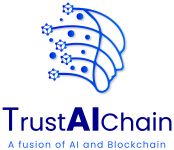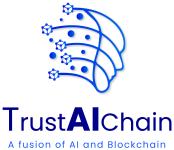This shift necessitates a fundamental rethinking of how we build ethical governance frameworks. It’s no longer just about writing policies. It’s about designing protocols that govern how intelligent systems behave, how decisions are made, and how accountability is maintained. Now, let’s see how AI and blockchain can be combined to create next-generation governance models that are ethical, efficient, and resilient.
Why Traditional Governance Models Are Failing in the Digital Era
Organizations have historically relied on written policies, codes of conduct, and manual audits to enforce governance. While this worked in relatively stable environments, it struggles in a digital-first world where:
- AI systems make autonomous decisions (e.g., loan approvals, hiring, medical diagnostics)
- Blockchain systems are decentralized and don’t have a central authority to enforce rules
- Data privacy regulations (like GDPR and CCPA) demand real-time compliance and auditability
- Stakeholders demand transparency, fairness, and ethical responsibility
Traditional governance frameworks are reactive. But AI and blockchain systems require proactive, embedded ethics, what we call “Governance-by-Design.”
Governance-by-Design: From Policies to Protocols
The concept of Governance-by-Design means building governance principles directly into the technological infrastructure, protocols, algorithms, and smart contracts. Instead of creating rules for people to follow, organizations create technological protocols that enforce governance automatically.
This is where AI and Blockchain shine:
- AI helps detect ethical violations, assess risks, and adapt governance strategies using predictive models.
- Blockchain enforces rules transparently via smart contracts, enabling decentralized, tamper-proof governance.

Foundational Pillars of an Ethical Governance Framework
To build a robust governance framework using AI and blockchain, organizations must address five foundational pillars:
- Transparency
- AI: Use Explainable AI (XAI) to ensure decision-making logic is interpretable.
- Blockchain: Record transactions and rule enforcement on public or permissioned ledgers.
- Combined: Enable traceable decision paths (e.g., “Why was this loan denied?”) recorded immutably.
- Accountability
- AI: Implement model audit trails to trace how models evolve and are used.
- Blockchain: Smart contracts automatically log actions and outcomes.
- Combined: Establish digital accountability chains where both systems log and validate each other’s actions.
- Fairness and Bias Mitigation
- AI: Use fairness metrics (e.g., demographic parity, equalized odds) and tools like IBM AI Fairness 360 or AWS Clarify.
- Blockchain: Encode non-discriminatory rules into smart contracts.
- Combined: Validate AI decisions on the blockchain to detect anomalies or bias triggers in real-time.
- Privacy and Data Sovereignty
- AI: Integrate differential privacy and federated learning to protect user data.
- Blockchain: Use zero-knowledge proofs (ZKP) and decentralized identity (DID) solutions.
- Combined: Give users control over their data while allowing AI to learn from encrypted or decentralized sources.
- Ethical Automation
- AI: Align models with human-centric design principles (beneficence, non-maleficence).
- Blockchain: Limit automation through “kill switches” and consensus protocols.
- Combined: Design “ethical failsafes” where blockchain protocols halt AI actions that deviate from ethical baselines.

Building the Framework
Step 1: Define Ethical Objectives
Clearly outline what “ethical AI” and “responsible blockchain” mean in the context of your organization. Examples:
- Avoid algorithmic bias
- Ensure explainability
- Maintain auditability and transparency
Step 2: Identify Use Cases
Pick critical operations where AI and blockchain intersect, such as:
- AI-powered loan approvals recorded on a blockchain
- HR automation with decision logs validated on-chain
- Supply chain tracing with AI analytics and blockchain records
Step 3: Design Governance Protocols
- Write smart contracts that enforce governance rules automatically
- Apply AI governance frameworks (e.g., NIST AI RMF, OECD AI Principles, ISO/IEC 42001)
Step 4: Implement Explainability and Monitoring
- Use XAI tools like LIME, SHAP, or What-If Tool
- Monitor decision logs through dashboards built on blockchain explorers
Step 5: Establish Auditing and Feedback Loops
- Use blockchain for immutable audit logs
- Employ AI to monitor for anomalies or ethical violations
- Periodically retrain models with diverse datasets to maintain fairness

Here are Real-World Applications
Healthcare
- AI diagnoses can be logged on-chain to ensure doctors and patients can verify rationale and consent.
- Blockchain ensures data privacy and traceability for medical records.
Finance
- AI-driven risk models for lending, insurance, and investments are monitored using blockchain-based audit trails.
- Smart contracts enforce compliance rules and ethical lending protocols.
Public Sector & Voting
- AI helps detect fraudulent activities and voter manipulation.
- Blockchain ensures tamper-proof voting systems with transparent tallying.
The Risks and Challenges
Despite its potential, this hybrid approach presents some challenges:
- Model opacity: Even explainable models are hard to interpret at scale.
- Smart contract bugs: Once deployed, they are hard to change.
- Regulatory lag: Laws may not keep pace with protocol-level innovations.
- Interoperability issues between AI platforms and blockchain networks.
The shift from policies to protocols is a paradigm change in how we think about ethical governance. AI and blockchain are not just tools; they are governance enablers that, when used responsibly, can hard-code fairness, accountability, and trust into the core of digital organizations.
By embracing these technologies thoughtfully, organizations can build systems that don’t just comply with ethics; they live and enforce them.
Welcome to Governance 3.0,where protocols are ethical, systems are self-regulating, and design encodes trust.







